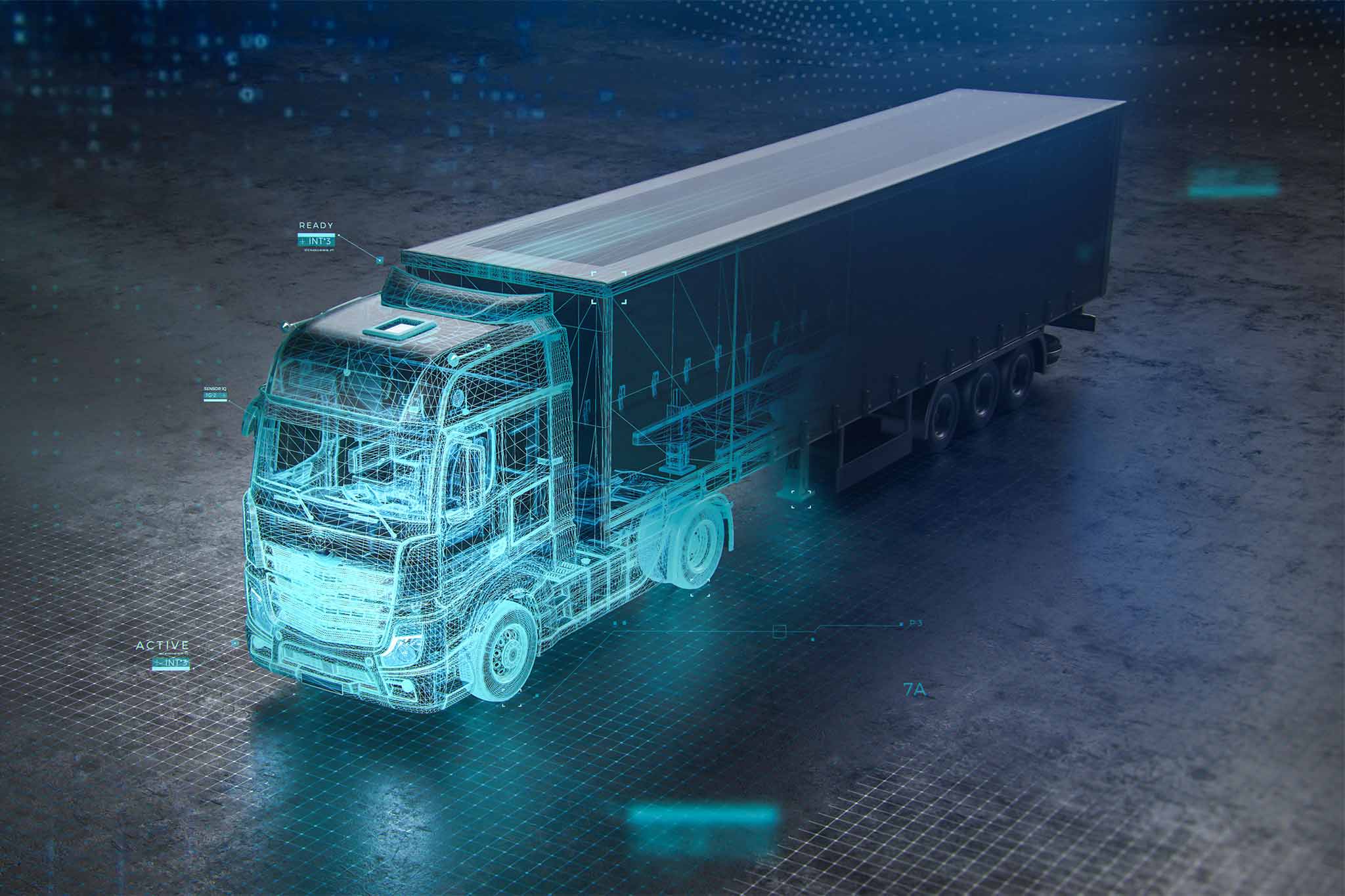Telematics have transformed fleet management over the past 50 years. Electronic logging devices help owners visualize vehicle movement and driver behavior, leading to improvements in compliance, driver safety, operational efficiency, and vehicle health.
Fleet telematics have rapidly evolved in the years since the pandemic. Emerging technologies and shifting industry dynamics are reshaping the way businesses approach vehicle and driver management. Meanwhile, lawmakers are adjusting regulations to keep pace with progress. In this ever-changing technological and regulatory landscape, companies that can anticipate and adapt to new developments will have the highest chances of success.
Prediction 1: Advanced Integration of AI and Machine Learning
As transportation companies face an increasing demand for road safety and operational efficiency, AI and machine learning are poised to revolutionize fleet management. These technologies can gather and analyze massive amounts of historic and real-time data about vehicle health, traffic patterns, driver behavior, weather, and road conditions. Critically, they can then return deeper insights than human analysis alone.
Used efficiently, AI-driven tools can reduce the cost of fleet ownership by:
- Optimizing routes to reduce delays and improve delivery speed
- Predicting maintenance schedules to prevent breakdowns and costly repairs
- Defining safety protocols to protect drivers, identify training needs, and reduce accidents
While AI and machine learning have the potential to streamline and optimize operations, integrating them successfully will require a significant investment in both technology and training.
Prediction 2: Stringent Emission Regulations and Eco-Friendly Fleet Management
Countries across the globe are doubling down on environmental sustainability, which means stricter emissions regulations are on the horizon. Heavy-duty vehicles are a natural target — they’re responsible for a disproportionate 25% of transportation-related carbon dioxide emissions in the United States. In 2023, the U.S. Environmental Protection Agency (EPA) proposed strict measures to reduce emissions in this sector.
As laws change, fleet owners will shift toward a more eco-friendly system to maintain compliance. Some companies will start by adopting environmentally friendly fuels or advanced diesel engines; others will begin replacing older trucks with hybrid or electric vehicles (EVs).
Achieving the EPA’s emissions targets will be both expensive and time-consuming. The agency estimates that vehicle manufacturers will need to spend $6 billion (after tax credits) to comply; purchasers can expect to pay about $17,000 more upfront for a zero-emissions day cab tractor. In return, the industry could save $250 billion in repair and fuel costs and eliminate about 1.8 billion metric tons of emissions by 2055.
Prediction 3: Enhanced Driver Safety Protocols and Training
Lawmakers, law-enforcement professionals, and trucking companies are becoming increasingly aware of the need for greater driver safety. In fact, the American Transportation Research Institute found that driver distraction is one of the top industry concerns. To mitigate risk, fleet managers are likely to implement stricter safety protocols and comprehensive training in the coming years.
This is another area where technology will play a crucial role. Expect more companies to implement advanced driver-assistance systems (ADAS) that use a combination of cameras and sensors to power features, including:
- Lane-departure warnings
- Lane-keep assistance
- Blind-spot monitoring
- Traffic sign recognition
- Automatic emergency braking
Real-time feedback and corrective actions can help stop risky behavior before it causes an accident. According to a report from the National Highway Traffic Safety Administration, ADAS could help reduce crashes by 62%. These systems also generate a great deal of useful data; AI tools will help businesses analyze the information to identify red flags and recommend targeted training for individual drivers.
While enhanced monitoring and analysis have the potential to increase safety, employers must be prepared to address privacy concerns and find room in the budget for both technology implementation and continuing education.
Prediction 4: Greater Emphasis on Data Security and Privacy
As fleet owners become more reliant on data-driven solutions, data security and privacy will become mission-critical. Telematics technologies that transmit and store data are vulnerable to data breaches and cyberattacks. Hackers could hold companies’ data hostage, expose proprietary information, or disrupt supply chains. And any time software intersects with physical systems, as it does with ADAS, there’s a risk that unauthorized parties could interfere with vehicle operation.
To avoid these threats — and protect company and client privacy — fleet owners must invest in robust security measures for individual devices and the system as a whole. It’s also critical to monitor compliance requirements; increasingly connected vehicles are almost certain to prompt new regulations and privacy laws that will impact fleet operations.
Prediction 5: Collaborative Efforts Between Government and Private Sectors
Industry players must be prepared to collaborate with governmental bodies as new technologies continue to transform fleet telematics. By educating legislators and participating actively in the process, it will be easier to achieve standardized regulations that benefit everyone on the road — without sacrificing security or innovation.
Greater collaboration could lead to exciting joint ventures, including:
- Third-party data access to boost compliance
- New technologies to increase security
- Uniform safety and operational standards
Government participation inevitably comes with bureaucratic challenges and opposing goals. However, change is coming, regardless of whether private parties participate. By getting involved, companies can benefit from fair, informed regulations and accelerated growth.
Preparing for Upcoming Changes in Fleet Telematics
Expanding technologies, new driver safety protocols, and evolving regulations are almost certain to impact the majority of fleet managers and owners in the next 3 to 5 years. During this period of change, it’s more important than ever to stay informed and adaptable — that way, you can adjust quickly to shifts in the industry.
Fleetworthy’s Intelligent Compliance Platform can help; our user-friendly system provides actionable data that boosts compliance, increases safety, and helps you make better decisions. Ready to get started? Learn more about the Intelligent Compliance Platform today.


